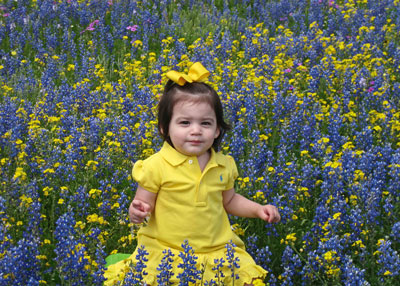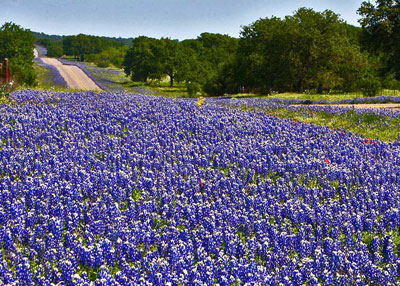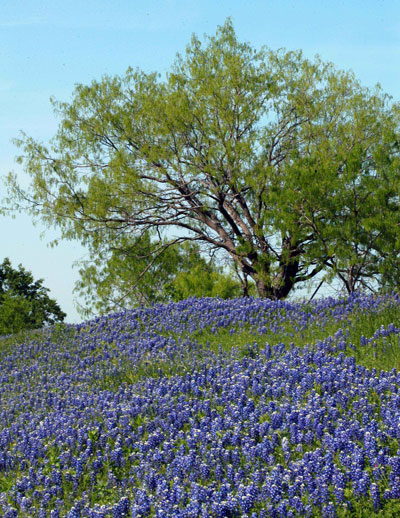March and April can be spectacular across Texas as our spring wildflowers hit
their full stride. And leading the pack, painting our hillsides glorious blues,
are the billions of bluebonnets. No wonder we love them so much.
Want to see Texas bluebonnets? Leave it to Texas Highways Magazine to deliver
the goods. Here is comprehensive information from their website.
• Sow seeds in late summer or very early fall into lightly
tilled soil. Bluebonnets germinate with early fall’s rains. They establish their
rosettes of leaves and their deep root systems over the winter so they’ll be
ready to come into full bloom in early spring.
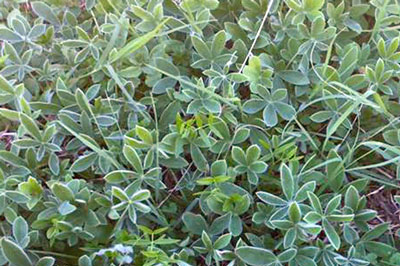
This is the way your young bluebonnet plants should
look by November’s first frost. This photo was posted to my Facebook page by one
of my readers a year or two ago.
• Use scarified seeds. That’s a term that means the very
hard seed coat has been softened or roughened in some way to promote faster,
more uniform germination. Commercial seed producers found 30 years ago that
sulfuric acid did the best job, but that’s a dangerous task that must not be
attempted by home gardeners. Either buy acid-treated seeds or use two blocks
with sandpaper to scarify the seeds. Rub the seeds between the blocks until you
sand through the outer seed coats.
• Rake the soil lightly after you sow your seeds, then water
with a lawn sprinkler to settle them in. Water again a few days later and
perhaps one or two more times if you don’t get any rain. Do not fertilize them
at all.
• After the plants finish blooming in spring leave them in
place so that their seeds can mature. By the time the seed pods are dried and
rattle you can trim or mow the area, leaving the seed stubble in place.
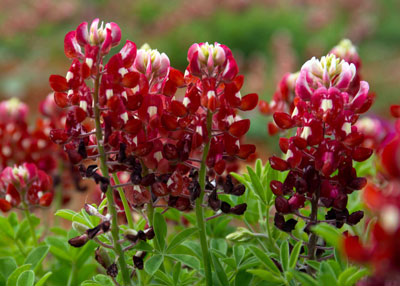
Almost 40 years of hard work by Dr. Jerry Parsons and
others have led to this fabulous red bluebonnet, perfect for use in the Texas
State flag. Well done, Jerry!
The search for a red bluebonnet…
Back in the
early 1980s, in anticipation of the Texas Sesquicentennial in 1986, Dr. Jerry
Parsons of the Texas Agricultural Extension Service (now Texas AgriLife
Extension) and the late Carroll Abbott of Kerrville set out to develop a stand
of truly red bluebonnets to go with the blue and white bluebonnets already
available. Their ambition was to recreate the Texas flag using bluebonnets as
the source of its colors.
We lost Mr. Abbott years before the journey was completed, but Jerry Parsons
continued on his search. He’s been a friend of mine for 45 years, and I’ve had
the pleasure of watching him do some amazing horticultural research. Out of
respect for his lifetime of work, the Texas Nursery and Landscape Association
awarded him Honorary Lifetime Membership last August. No one is more
deserving.
Jerry has not only developed a pure strain of red bluebonnets, but he also
was instrumental in developing Alamo Fire maroon bluebonnets (Aggies love that
one), and he continues working on other colors as well. I had the chance to see
his production fields south of San Antonio four years ago, and that was a real
treat.
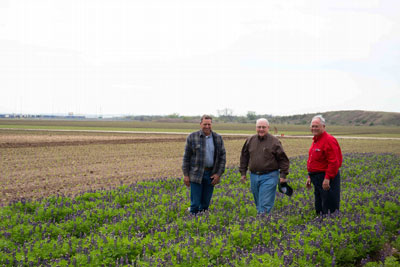
Dr. Larry Stein (Associate Dept. Head for Extension
Horticulture), Neil Sperry, and Dr. Jerry Parsons (retired from TAMU Texas
AgriLife Extension) stand in a research and production field of Dr. Parsons’
bluebonnets and try to look like they know what they’re doing.
How the bluebonnet became our State Flower…
Here
is information Jerry Parsons shared with me a couple of years ago.
“In the spring of 1901, the Texas Legislature got down to the serious
business of selecting a state floral emblem, and the ensuing battle was hot and
heavy. One legislator spoke emotionally in favor of the cotton boll, since
cotton was king in Texas in those days.
Another, a young man from Uvalde, extolled the virtues of the cactus so
eloquently, noting the hardy durability of the plant and the orchid-like beauty
of its flowers, that he earned the nickname of “Cactus Jack” which stuck with
him for the rest of his life. He was John Nance Garner, and he later became Vice
President of the United States.
But the National Society of Colonial Dames of America in Texas won the
day. Their choice was Lupinus subcarnosus (“generally known as buffalo
clover or bluebonnet,” stated the resolution) and it was passed into law on
March 7 without any recorded opposition.
And that’s when the polite bluebonnet war was started.
Lupinus subcarnosus is a dainty little plant that paints the sandy,
rolling hills of coastal and southern Texas with sheets of royal blue in the
early spring. But some folks thought it was the least attractive of the Texas
bluebonnets. They wanted Lupinus texensis, the showier, bolder blue
beauty that covers most of Texas and gives inspiration to many an
artist.
So, off and on for 70 years, the Legislature was encouraged to correct
its oversight. But the wise Solons of Capital Hill weren’t about to get caught
in another botanical trap, nor did they want to offend the supporters of
Lupinus subcarnosus. They solved the problem with typical political
maneuvering.
In 1971, the Legislature handled the dilemma by adding the two species
together, plus “any other variety of bluebonnet not heretofore recorded,” and
lumped them all into one state flower.
Among the many things the Legislature did not know then was that the big
state of Texas is home to three other species of Lupines, and the umbrella
clause makes all five of them the state flower. And, if any new species are
discovered, they automatically will assume the mantle of state flower as
well.
• Lupinus subcarnosus, the original champion
and still co-holder of the title, grows naturally in deep sandy loams from Leon
County southwest to LaSalle County and down to the northern part of Hidalgo
County in the Valley. It is often referred to as the sandy land bluebonnet. The
plant’s leaflets are blunt, sometimes notched with silky undersides. This
species, which reaches peak bloom in late March, is not easy to maintain in clay
soils.
• Lupinus texensis, the favorite of tourists
and artists, provides the blue spring carpet of Central Texas. It is widely
known as the Texas bluebonnet. It has pointed leaflets, the flowering
stalk is tipped with white (like a bunny’s tail,) and it hits its peak bloom in
late March and early April. It is the easiest of all the species to
grow.”
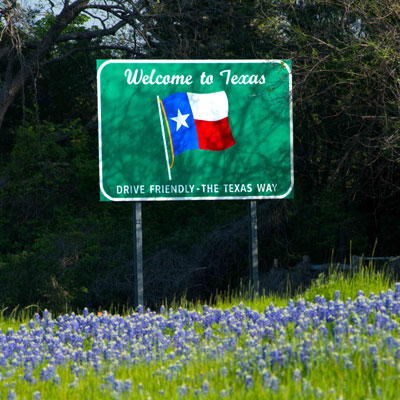
This sign welcomes travelers to Texas at Eisenhower
State Park.
Posted by Neil Sperry
